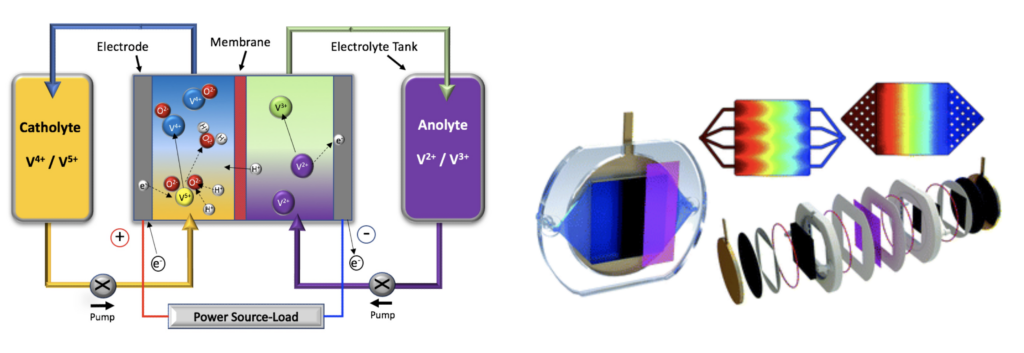Advancing Energy Storage: Redox Flow Batteries and the Promise of Sustainable Electrolytes
With the increasing demand and adoption of renewable energy, the need for effective energy storage solutions is more critical than ever. Redox Flow Batteries (RFBs) are rapidly emerging as a top choice for energy suppliers, particularly those in the renewable sector. Among these, Vanadium Redox Flow Batteries (VRFBs) stand out, boasting several advantages over competing systems. These include scalability, long lifespan, instant energy release, superior charge retention, and the ability to discharge fully without incurring any damage.
However, a key cost and performance factor for next-generation VRFBs is the electrolyte composition. This is often responsible for the comparatively lower energy densities of VRFBs versus other battery types. Our innovative research is focused on formulating new electrolytes, which has led to a significant enhancement in energy densities – traditionally a constraint in these redox-flow battery systems. Furthermore, these reformulated electrolytes offer additional benefits such as low flammability and long-term electrochemical stability.

New Electrolytes with Earth-Abundant Redox-Couples
In addition to our work on Vanadium Redox Flow Batteries, our research is also extending into exploring non-vanadium-based electrolytes that utilize more abundant elements. We are in particular delving into the potential of all-iron electrolytes. Iron, being one of the most abundant and affordable elements on Earth, presents a promising alternative to vanadium. By harnessing its ubiquity and cost-effectiveness, we aim to develop a more accessible and sustainable solution for energy storage. Preliminary studies show promising results, with the all-iron systems demonstrating robust performance, durability, and safety. This shift towards more abundant materials not only enhances the economic feasibility of redox flow batteries but also reduces our reliance on less abundant resources, creating a truly sustainable energy storage solution for the future.
In our quest to maximize the utilization of renewable energy resources, it’s critical to develop new large-scale stationary energy storage technologies, like redox flow batteries. However, the cost and reliability of test cells can often pose challenges. To address this, we’ve developed an open-source, low-cost, customizable 3D-printed test cell as a ground-breaking alternative. This innovative cell is designed to be printable using affordable desktop 3D-printers and readily available polymers. Our simulation-led design optimization process resulted in an improved internal manifold geometry, leading to enhanced real-world performance. We’ve tested the polymers for chemical compatibility, and, through advanced X-ray micro-CT, we’ve identified optimized parameters for 3D-printing. This approach offers researchers an accessible and cost-effective way to produce robust cells, democratizing research and increasing accessibility to flow electrochemistry.
